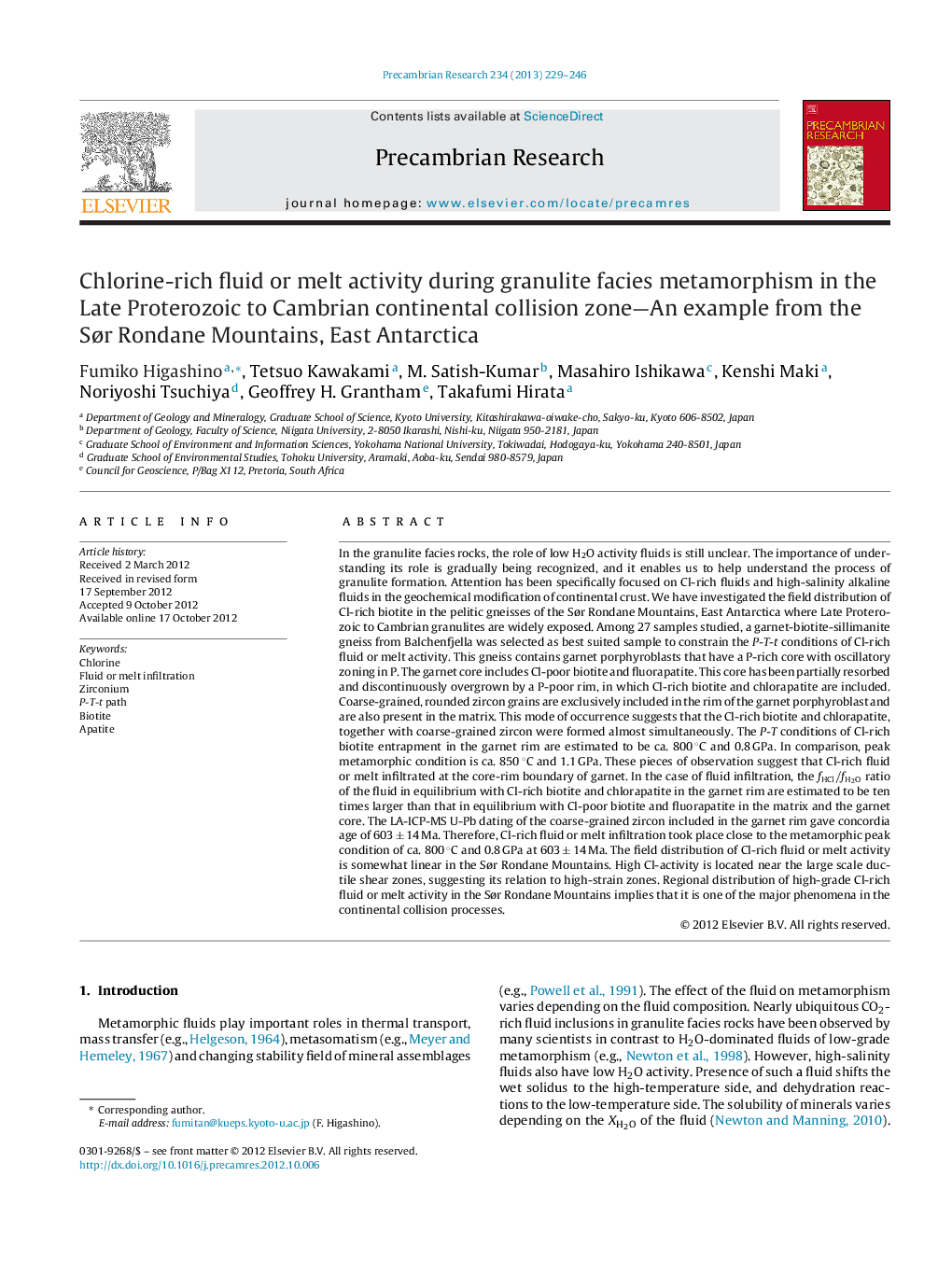| کد مقاله | کد نشریه | سال انتشار | مقاله انگلیسی | نسخه تمام متن |
|---|---|---|---|---|
| 4723283 | 1639640 | 2013 | 18 صفحه PDF | دانلود رایگان |

In the granulite facies rocks, the role of low H2O activity fluids is still unclear. The importance of understanding its role is gradually being recognized, and it enables us to help understand the process of granulite formation. Attention has been specifically focused on Cl-rich fluids and high-salinity alkaline fluids in the geochemical modification of continental crust. We have investigated the field distribution of Cl-rich biotite in the pelitic gneisses of the Sør Rondane Mountains, East Antarctica where Late Proterozoic to Cambrian granulites are widely exposed. Among 27 samples studied, a garnet-biotite-sillimanite gneiss from Balchenfjella was selected as best suited sample to constrain the P-T-t conditions of Cl-rich fluid or melt activity. This gneiss contains garnet porphyroblasts that have a P-rich core with oscillatory zoning in P. The garnet core includes Cl-poor biotite and fluorapatite. This core has been partially resorbed and discontinuously overgrown by a P-poor rim, in which Cl-rich biotite and chlorapatite are included. Coarse-grained, rounded zircon grains are exclusively included in the rim of the garnet porphyroblast and are also present in the matrix. This mode of occurrence suggests that the Cl-rich biotite and chlorapatite, together with coarse-grained zircon were formed almost simultaneously. The P-T conditions of Cl-rich biotite entrapment in the garnet rim are estimated to be ca. 800 °C and 0.8 GPa. In comparison, peak metamorphic condition is ca. 850 °C and 1.1 GPa. These pieces of observation suggest that Cl-rich fluid or melt infiltrated at the core-rim boundary of garnet. In the case of fluid infiltration, the fHCl/fH2OfHCl/fH2O ratio of the fluid in equilibrium with Cl-rich biotite and chlorapatite in the garnet rim are estimated to be ten times larger than that in equilibrium with Cl-poor biotite and fluorapatite in the matrix and the garnet core. The LA-ICP-MS U-Pb dating of the coarse-grained zircon included in the garnet rim gave concordia age of 603 ± 14 Ma. Therefore, Cl-rich fluid or melt infiltration took place close to the metamorphic peak condition of ca. 800 °C and 0.8 GPa at 603 ± 14 Ma. The field distribution of Cl-rich fluid or melt activity is somewhat linear in the Sør Rondane Mountains. High Cl-activity is located near the large scale ductile shear zones, suggesting its relation to high-strain zones. Regional distribution of high-grade Cl-rich fluid or melt activity in the Sør Rondane Mountains implies that it is one of the major phenomena in the continental collision processes.
► Cl-rich fluid or melt activity under near peak metamorphism at ca. 800 °C and 0.8 GPa.
► Field distribution of Cl-rich fluid/melt activity in 603Ma continental collision zone.
► Cl-rich fluid or melt activity observed near the shear zones and mobility of Zr in it.
Journal: Precambrian Research - Volume 234, September 2013, Pages 229–246